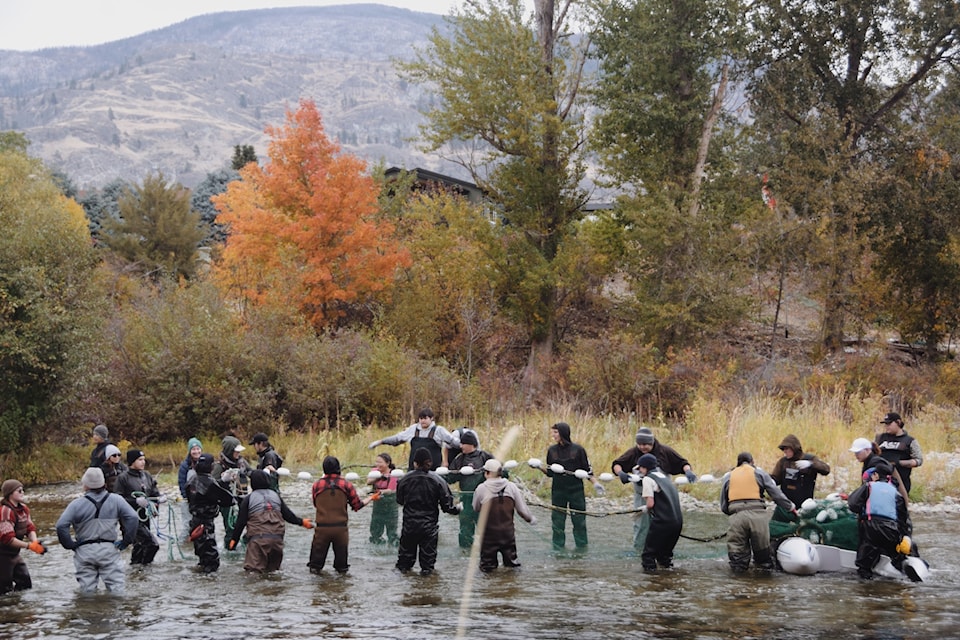With over 3.5 million sockeye salmon eggs collected and between 300 to 400,000 being collected every day, 2024 is looking to be one of the best years yet for the Okanagan Nation Alliance's broodstock program.
Black Press spoke with ONA fisheries biologist Ryan Benson on Oct. 24, and the estimated egg count had already gone up by close to a million from a social media post the ONA shared just the day before.
"It's definitely a moving target," said Benson. "By the time you do a release, that number might be out of date even after a few hours."
That kind of return is great news, with a goal of over five million eggs from salmon caught near Oliver and Osoyoos. The previous record was about 5.4 million.
The collected eggs, which will go to the ONA's hatchery located on the Penticton Indian Band, are on top the natural spawns taking place up and down the valley and the greater Columbia River Basin.
"We still don't know the final count of spawning population, but down in the COlumbia they had record breaking runs before they even entered the Okanagan," said Benson. "Our estimate in August in Osoyoos lake was around 250-260,000."
That number is a far cry from the days when conservation of the salmon first crystallized almost 30 years ago. In those days, the salmon populations were so low, and their abilities to travel back to the Okanagan to spawn so limited, that there were legitimate worries about the population dying off.
Estimates on the return to Osoyoos lake in the mid to late 1990s were just about 5,000 spawning salmon. This year has seen 50 times that, and another milestone with the first documented return of a chinook salmon to Okanagan Lake.
The chinook has made returns in Oliver, but 2024 marked the first time with evidence that one released from the hatchery made it's four-year return to Okanagan Lake.
The biologists are able to determine which fish they released through several means, including shaving down a particular bone in the fish's head and studying the rings inside like a tree.
"We alter the temperature in the water, there's a whole way of doing it, that basically puts a distinct mark in those rings," said Benson.
Much like how a tree will have mark inside the rings after a wildfire year, the salmon carry that distinctive mark with them for the rest of their lives as they swim out to the ocean and make the attempt to return to spawn.
That 1,200 kilometre journey takes years to make, and after 11 years of operation, the hatchery on the PIB's impact has continued to grow.
The future of the program was shaken up, following the interview with Benson, when the Confederated Colville Tribes in the United States announced that they would be pulling out.
Collaborative efforts between the ONA and the CCT had helped get the hatchery program up and running, as it doesn't receive funding from the provincial government.
Advocacy work also went into getting fish ladders and other access ways built in the nine hydro dams that are along the route from the Okanagan and through Washington State.
The salmon population that's returning to Skaha Lake, Benson said, has almost reached the point of being self-sustaining. Preliminary work and begun in 2019 and 2020 to improve the passage into Okanagan Lake.
"We have stories from Elders and from what they remember, even in the early 20th century just the sheer amount of fish that were there," said Benson. "We know there more pre-contact, and even now, I think typically about 80 to 90 per cent of the Columbia run comes from from the Okanagan Basin."



